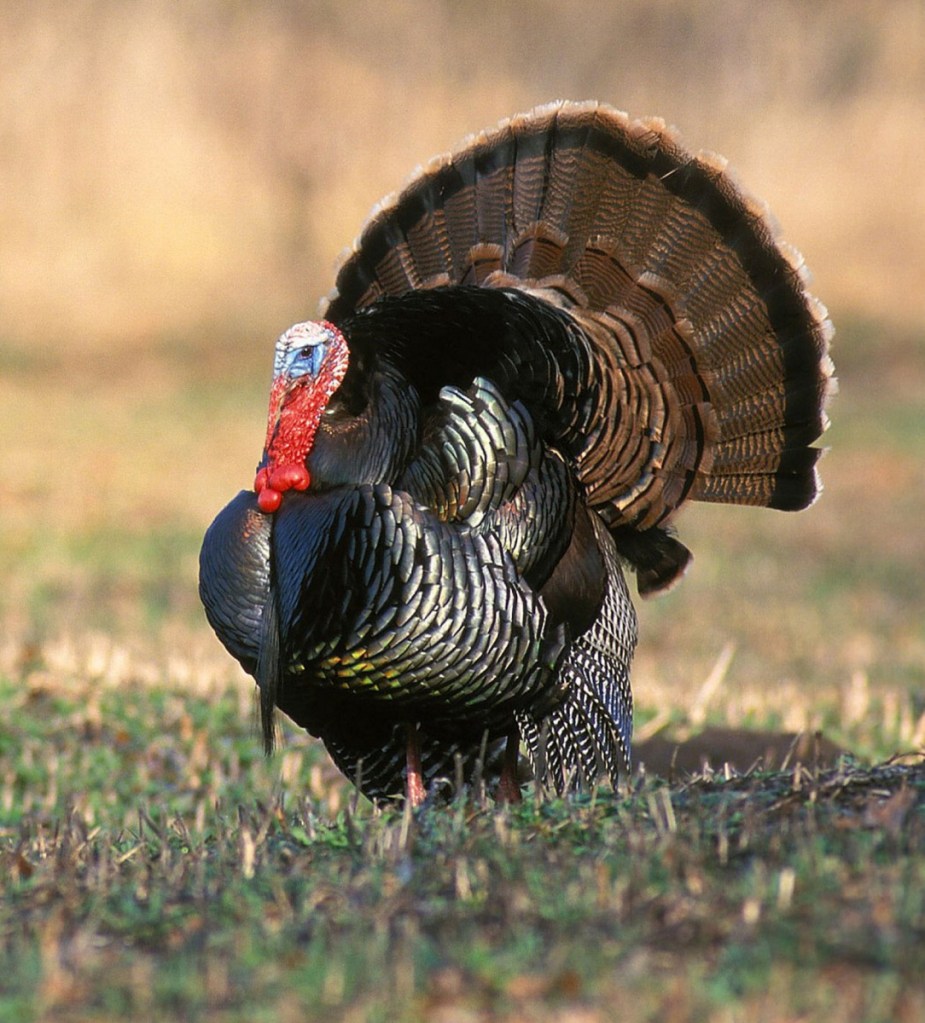I’d heard about it but didn’t really believe it true until I witnessed it for myself. The early-morning hustle of activity was over, the sun was up and the woods were settling into the post-dawn doldrums.
The turkeys had quit gobbling so I opted to pick a likely spot, set out a decoy and settle in for what I figured to be a long morning. Calls and other gear were carefully arranged. As is often the case I started my serenade with a box call, softly at first, in case a bird had somehow slipped silently in close. Then I belted out a few loud yelps, all to no avail.
Sensing the serenity of the scene, I switched to a slate, starting with a few clucks and purrs, followed by more yelping, and still more silence. Obviously I was alone and so figured to get in some practice with a new mouth call, beginning with a few sharp cutts. I never got to yelps as my first few cutts were cut off by a booming gobble just over the rise. And I barely had time to settle the shotgun on my knee before a full strut gobbler hastened toward my decoy. The next boom was mine.
The point of all that is this: Don’t go into the woods undergunned when it comes to turkey calls. There’s almost no limit to the list of things turkey hunters might consider bringing afield with them but foremost among the essentials are calls. And you should carry several because gobblers can be fickle. Some days they’ll gobble at the creaking of a rusty farm gate and others they seem to have lockjaw. Then there are days when, as the tale illustrates, you have to find just the right tone to strike a responsive note.
My rotation begins with a box call. It makes a good starter because it’s loud enough to strike a bird from some distance; and as long as they’re that far off, I need not worry about the motion of cranking the paddle. I typically only carry one but on inclement weather days sometimes carry two. The primary one is wood, which to me produces a purer sound. I honestly don’t know if it makes a difference to the turkeys. The alternate would be some synthetic device that will still work when it’s wet.
Those are also among the reasons I carry several “slate” or pot and peg calls as my middle relievers. One is always a wood pot with a genuine slate surface. Again, I don’t know if the turkeys can tell but it sounds better to me. The second slate is some type of synthetic, and you have many to choose from: aluminum, copper, steel, composite, plastic and glass. I prefer some type of acrylic surface. The metal ones do work but they sound too tinny to me.
To complement my slates I carry three strikers. That gives me six options as each sounds differently on each slate. At least one is natural wood; more often two. The other is usually a carbon shaft with a wood or synthetic handle – something that will work even when wet. If none of those elicit the requisite gobble, I still have ample options.
If I had to head afield with only one call, and thankfully I don’t, it would be a mouth call. The vast majority of my calling is done with diaphragms. I use box calls to strike a distant bird and may work him a bit with a slate, but eventually I’ll switch to the hands-free luxury and much greater diversity of the diaphragm. With a twist of the tongue and a change of air pressure I can alter the pitch, tone, mood, intensity and volume. And because they take up no space, I typically have at least three and often a half-dozen, because you just never know.
Like one morning in Texas, years ago. I started with my box, switched to a slate but couldn’t raise a gobble. Then I heard the competition, a real hen, garner a gobble with her first set of yelps. Her voice was much higher pitched and it took several attempts before I found a diaphragm that rivaled hers. The birds came much easier after that.
Bob Humphrey is a certified wildlife biologist, registered Maine guide and the author of two books on turkey hunting. He can be reached at:
bhhunt@maine.rr.com
Send questions/comments to the editors.



Success. Please wait for the page to reload. If the page does not reload within 5 seconds, please refresh the page.
Enter your email and password to access comments.
Hi, to comment on stories you must . This profile is in addition to your subscription and website login.
Already have a commenting profile? .
Invalid username/password.
Please check your email to confirm and complete your registration.
Only subscribers are eligible to post comments. Please subscribe or login first for digital access. Here’s why.
Use the form below to reset your password. When you've submitted your account email, we will send an email with a reset code.